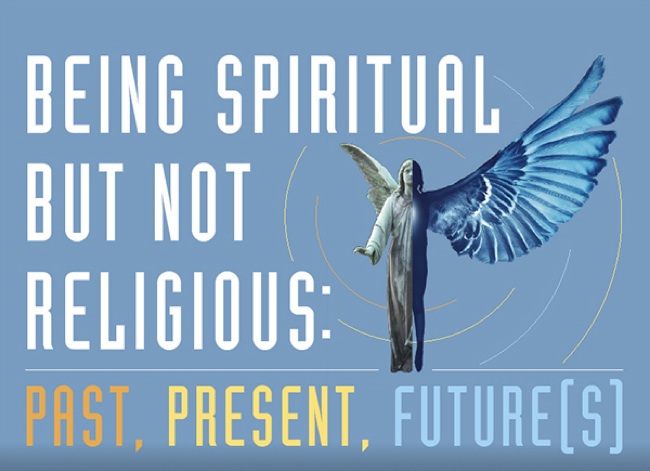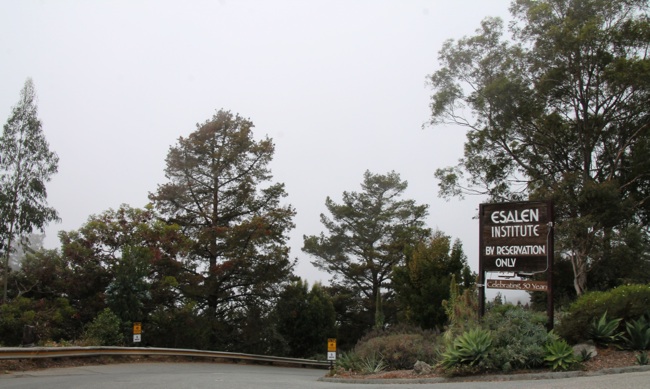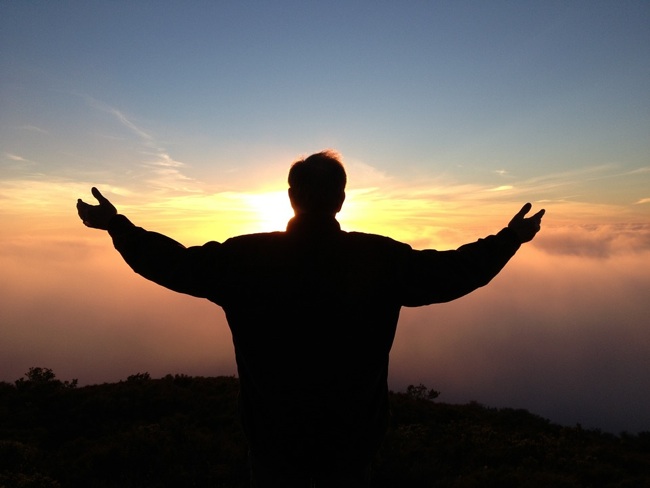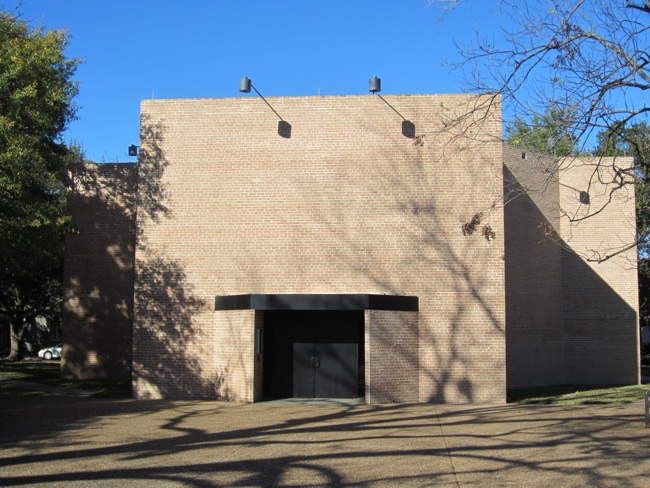
Bill Parsons
The “What” of SBNR
Recent Pew polls tell us that over 20% of the U.S. population and over 70% of the 19-28 year old crowd self-describe as being “spiritual but not religious.” That is significant, and it perks the interest of scholars of religion. But what does “being spiritual but not religious” mean? It’s on dating sites, so it must be something! But is it clear-cut and easy to identify, or is it more like what Gertrude Stein once said about Oakland, California, namely: “There is no there there.” It’s a good question. In this and the next two sections we’ll shed some light on the spiritual but not religious movement (SBNRM) and on “being” spiritual but not religious (BSBNR). Lets start with the easy.
We can say what it’s not – it does not refer to those who have definitively settled in a particular institutionally based religious tradition, are happy with its ethical and metaphysical postulates, and are consistent in observing its services and rituals. If this is the case, then it would suggest that BSBNR refers to those who are not wedded to a particular tradition – those who, on the one hand, are disillusioned with traditional institutional religion and, on the other hand, feel that those same traditions contain deep wisdom about the human condition. To say “I’m spiritual but not religious” would then indicate that a person seeks to integrate religious wisdom without fully committing to what is perceived to be the false trappings and mendacity of religious accoutrements of all kinds (i.e., dogma, ideologies, rituals, hierarchies, etc.). At the same time, befitting spiritual shoppers, it also speaks to those who canvass multiple religious traditions, mining their spiritual wisdom and introspective techniques not for dry dogma but for the juice of peak experience, in order to foster a spiritual journey tailored to their individual needs.
This general portrait has been detailed a bit more in the contemporary academic literature on the topic. In being suspicious of organized religion, the typical SBNRer contests any claim to absolute authority with regard to traditional institutional forms of religion, their complicity in sustaining structural gender inequalities, structural racism, and their role in perpetuating unfair forms of economic, social and political power. In contrast, those who profess to “being” SBNR tend to valorize individualism, free creative choice and expression, egalitarianism, progressivism, a psychological/therapeutic approach to spiritual growth, and a seeker/quester/consumer mentality. They come from diverse educational, ethnic, and racial backgrounds, lean to the left politically and, befitting a pluralistic culture, are eclectic in relation to socially regnant religious traditions. They see humans as basically good (and reject notions of “original sin”), are more liable to devalue a traditional community in favor of participating in multiple, diverse, yet related institutional forms (think the local Jung Institute, the local Zen center and, yes, even the Catholic mass), are on the whole pantheistic/monistic in outlook, affirm a liberative (if undefined) ethic, and are likely to affirm reincarnation.

Often this rendering of what constitutes being SBNR has given rise to caricatures of who and what they are. An article by my colleague Linda Mercadante points to the disillusioned character played by Laura Dern in the HBO series Enlightened – a character who spends $50k on a Hawaii New Age retreat where she meditates, practices yoga, undergoes therapy, achieves a level of enlightenment, then returns to her corporate job in an effort to change her friends, family and the world as an illustration of what we might mean by BSBNR. Alternately, fans of Mad Men might recall the series finale, where during a retreat at the famous California Institute known as Esalen, Don Draper comes up with a new advertising jingle (“I’d like to buy the world a Coke”) – a jingle that, in real life, was recorded by the New Seekers under the title “I’d Like to Teach the World to Sing.” The underlying meaning of the song was to bring love and harmony to all the inhabitants of the earth. Or, to go even further, a recent YouTube video parodies the “church” of the SBNR.
But now that I’ve said all this, we have to resort to that time-honored scholarly dance: the qualification. The examples I just gave link the SBNRM to neoliberal capitalism and its consumer culture. But some remind us that BSBNR has taken many forms, reaching back well over a century, and that the broad spectrum of types that can be targeted as BSBNR range from the creative self-expression, rugged individualism and social activism of early New England Transcendentalists like Emerson, Thoreau and Walt Whitman to those who wish to, well, play golf with Oprah and Deepak (not that there’s anything wrong with that!). And again, ethnographic studies reveal that those who profess to BSBNR have a spectrum of allegiance to organized, institutional religion, ranging from those completely divorced from religion to those who have a certain degree of commitment to them – even to the extent of making a traditional religion their major home but integrating multiple other religious practices and ideation, as well as alternate religious and spiritual spaces, to fit their needs for spiritual individuation. In other words, BSBNR sometimes shades into “being spiritual and religious.” Which suggests that we need even more ethnographic studies as well as more analyses of what constitutes BSBNR – analyses which, by the way, would include the way that scholars like me, in cahoots with pollsters, tend to invent and sustain terms like SBNR only to replace them later with new iterations as we see fit. In other words whatever one might initially think BSBNR is, I can tell you that you are partially right but also partially, as Humphrey Bogart once said in Casablanca, misinformed.
And so, being misinformed, we can say more.
The “Whence” of the SBNR.
One of the ways to know a bit more about what “being spiritual but not religious” means today is to go back into history: when it started and how it developed. Lets start with what we call in the trade “genealogies” (which is to say, the historical development of the term “spirituality”). The historical drift is from a form of spirituality defined relative to church and tradition (let’s call this “classic” spirituality) to a form divorced from church and tradition (let’s call this “modern spirituality”). For example, in the letters of St. Paul we find him speaking of “spiritus,” a term he used to signify those individuals whose mind, will and heart were ordered and led by the “spirit” (over against those egoistically attached to and led by the things of the world). While through the centuries Christian spirituality carried alternate meanings, at one point actually being used in a juridical sense to denote ecclesiastical offices and property, today the “churched” sense of spirituality refers to the aims and goals, practices and virtues, of believers defined relative to the totality of a churched, religious matrix (think St. Teresa of Avila or St. John of the Cross).
But “modern” spirituality, as my colleague Leigh Schmidt has so definitively demonstrated, took a slightly different course. It was those pesky liberal religious traditions (e.g., Transcendentalists, Unitarians, Quakers), their values (e.g., individuality, solitude, inner silence and meditation, ethical reforms, creative self-expression, appreciation of religious variety), and their consummate figures (people like Ralph Waldo Emerson, Walt Whitman, Henry David Thoreau, Howard Thurman, Rufus Jones, Margaret Fuller, Sarah Farmer) who produced, through a variety of cultural mechanisms, a specifically American version of spirituality. Walt Whitman speaks to this shift when he observed that the “spirituality of religion” would issue forth only in the “perfect uncontamination” and “solitariness of individuality” — an utterance that signaled the move to an unchurched, nontraditional, even anti-institutional orientation towards the divine.
Going forward in time, one of the very first references to SBNR was in 1926, in a journal called The American Mercury where the then President of the Rotary Club described his organization as inclusive, nonsectarian and, notably, as spiritual but not religious. That was mirrored in 1934 in, of all places, the Washington Post, in an article about the great Lusitania shipwreck–an article that described various models for memorializing the lives lost as “spiritual but not religious.” And while other snippets like these can be found in magazines and journals, it was the force of a therapeutic system — that of Bob Wilson and Bob Smith and their 12-step AA program, which was described repeatedly in the 50’s to the 70’s as being spiritual but not religious — that became the major force behind the popular dissemination of the term. And so it is that we get Ellen Burstyn’s character in the 1980 movie Resurrection – a character who has a near-death experience and subsequently gains paranormal powers – being described as “spiritual but not religious” ; and in 1985 Norman Lear, of all people, describing himself as a “spiritual but not religious Jew” and again, in a 1989, Los Angeles Times personals ad, a woman describing herself as a “Lovely Eurasian woman…spiritual but not religious. Believes love is the highest representation of the human experience.” In 1990, the moniker was taken up by the Gallup poll, becoming one of three options for describing one’s beliefs – religious, SBNR or neither (with 30% choosing SBNR) – the die was cast. SBNR was here to stay, which is to say, perhaps the entire concept of BSBNR really was invented by pollsters and scholars of religion!
Surely there were many other forces. What we are looking for are those cultural forces that might cause not just a few individuals but whole groups of them to become suspicious of and to withdraw from the traditional ways in which institutional religion asks us to demonstrate our commitment to the divine. Of course this is difficult, and the operative factors way too many to fully catalog here. That being said, here are a few salient observations.

The SBNRM tends to flourish in democratic and capitalistic societies, and so it is that one can point to things like the separation of church and state, pluralism (think Eastern religions: meditation and yoga), and the rise of film and social media as fermenting the cultural soil for the rise of the SBNRers. And don’t forget psychology! As Philip Reiff once wrote, we are a therapeutic society – there has been a “triumph” of the therapeutic (think Sigmund Freud, Carl Jung, and Abraham Maslow). Freud and his friends established what the anthropologist Victor Turner would call a “liminal” social space that left “religion” — what they referred to as the “cultural” super-ego — and its perpetuation of guilt, fear, “normal” (and repressed) sexuality — on the “other side” of the “double doors” of the therapeutic consulting room. But once in the consulting room religion became analyzed, deconstructed, and made an element of human projection and not divine ordinance. Enter the suspicion that religion was filled with human baggage (whether it be that of class, race, gender, or sexual orientation). That is, traditional forms of religion might not be anything more than what people in power (usually men) wanted it to be. So what was left of “the divine” now? In large part Jung and his friends had an answer: religion was not part of the “outside,” in institutions, but “inside,” in the deepest part of our unconscious. In fact, all the accoutrements of “organized” religion were but the molten rock of the living lava accessed through diving into the self. And one could have a bona fide “spiritual” experience even in the consulting room. “Peak experiences,” “self-realization” and “individuation’: these were the terms the psychological cultural makers bequeathed to us. We may have forgotten the theorists, but we live in the cultural soup they helped to make.
And don’t forget the university! It too is a social space – but not a “religious” one. University classrooms, unlike those social spaces found in churches, temples and mosques, do not proclaim a particular faith. On the contrary: they are secular, pluralistic and, above all, critical. When one agrees to participate in a university social space one agrees to hold religion as an object of critical scrutiny. That can and does change things, at least relative to religion defined in terms of church and tradition. After having read Freud, Durkheim, Marx, Nietzsche, and more, it becomes more difficult to take institutional religion as it is presented without a large dose of salt.
And one can say so much more. Think of the 1960’s with its focus on what is known as the “Death of God” theology, the ingestion of mind-altering substances like LSD, and the growing awareness that institutional religion was all too much in bed with politicians, capitalists and vested interests. Or, as has become apparent in the multiple scandals displayed through social media of all kinds, its evident structural racism, repressed sexualities, and gendered biases. There is much here to investigate, and all of it has caused many to cast a skeptical glance toward divine “commands” of any kind. If what psychologists call “idealization” is the psychological infrastructure of what those affiliated with religious traditions call “belief,” then the gradual and, in some cases, sudden disillusionment (or “de-idealization”) of traditional ways of communicating the divine has paved the way for the cultural ascendancy of the SBNRM.
So, in trying to answer the question — what cultural forces colluded to make up the SBNRM? — the answer is that it’s complicated! Lets take a food analogy. One can liken trying to figure out how the past gave rise to the present in terms of a smoothie. You know what a smoothie is, but unless you made it, can you identify all the ingredients? And isn’t the smoothie more than the sum of its parts? Well, so too with that cultural smoothie we call the “spiritual but not religious movement.” We can at least be somewhat clear, even if not exhaustively definitive, about the past cultural bananas that make up the SBNR smoothie. And, looking back to the previous section about the present characteristics of the SBNR, we can say that yes, it’s a broad spectrum of types, ranging from the creative self-expression, rugged individualism and social activism of the early New England Transcendentalists like Emerson, Thoreau and Walt Whitman to those who wish to play golf with Oprah and Deepak. It’s not one thing, but many shades of a spectrum, albeit all with a certain structural similarity.
The SBNR and its Future(s)
If this is where we are now, what about its future? Will the SBNRM continue to flourish or will it die on the vine, like so many other religious “movements”? If it continues to grow, what will it look like?
Here is where the scholar puts on a second cap: that of the public intellectual. If the SBNRM is somewhat nebulous, can we step up and help “form” it? Well, one thing is for sure: scholars have been quite active in pointing out what is ”wrong” with it. And, once that is on the books, we have at least some basis for suggesting how to “right” it. But, as has been said, the devil is in the details, and it’s not quite so simple. Scholars seem to love to disagree and, with respect to the wrong and the right of the SBNRM, there has been a fair amount of debate.
One issue, for example, is ethical: that of “spiritual narcissism.” Various scholars have rather forcefully leveled this critique of SBNRers. The gist of it states that, once freed from Church, Tradition, and Doctrine, those invested in the consumer approach to religion, often mediated by the neoliberal state, think it justified to accumulate “peak experiences” and other forms of navel gazing. But what happens to social activism? To a form of altruism where the “self” is at stake, even to the point of pain and, yes, death? To be frank, this perspective has some merit. But is it an apt characterization of the SBNR as a whole? Some empirical studies show that those who have gone through arduous forms of “humanistic” therapy and its valorization of “peak-experiences” become more socially engaged. And what about those early New England Transcendentalists, who made social activism an integral part of their program? And isn’t it true that “religion,” historically speaking, has helped create the various forms of structural inequality that the SBNRer is railing against? And, in any event, can the scholar, using any number of resources (ranging from post-modernism/post-humanism to the ethics of the Other and socially-engaged religiosities) propose (but not “impose”) alternate forms of relating to the Other in all of its forms: the Earth, animals, and humans of all backgrounds?

Another critique is social. Some, looking at the centrality of “community” in traditional forms of institutional religion, point out that there is no “there there” with the SBNRM. And how can we go forward if that’s the case? Humans need community! In response, others point to the reality of the American cultural soil. Democracy, pluralism, capitalism, and the historical stress on individuality, free choice and pragmatism means that maybe how we think of “community” has changed. Multiple social spaces, all entangled in some way, are becoming the norm for those invested in “individuating.” What the typical SBNRer has in common with her fellow shoppers is that they all are, obviously, shopping! It’s the “what” which they decide to buy that is different – which is quite appropriate given the present culturally valorized psychological ethos of how different and unique people are, and what works for one person may not work for her sister. It is, then, a kind of community – but one that is suitable for the culture in which we all live. It’s the Rothko Chapels and the Esalen Institutes which are the new Cathedrals and Churches; the Raves and the recently departed Prince that are the new ecstatic social spaces and mystical-erotic heroes; and the multiple, varied forms of social media which are the textual glue.
One can also look towards what is traditionally defined as “metaphysics”. What about the universe, about creation, about the afterlife? Where can we go after one has become disillusioned with the traditionally conceived “Father-God” who creates us all in his image? Well, we can say where some SBNRers have gone: more towards reincarnation, towards pantheism, towards a feminine version of the divine, towards humans as basically “good.” And others voices chime in: how about away from a uni-verse to a multi-verse? Towards a view of not simply the given material universe but multiple, interconnected universes that exist in various dimensional forms? That, at least, might square a bit (some would say) with the more poetic forms of string theory now animating astrophysics.
And on it goes. Whither the SBNRM? Perhaps it is more like a train without tracks that will go where the cultural soil leads. That soil is the track – which we will only see, in the future, retrospectively. In any case, it sure looks like the SBNR is here to stay. And, whatever one thinks of these theories and prognostications, it can’t hurt to continue to contribute to it’s what, its whence, and its possible future(s).
William B. Parsons is Professor of Religious Studies at Rice University. He has written and edited several books, including The Enigma of the Oceanic Feeling and Teaching Mysticism (Oxford University Press 1999). He has served as the Rice University Chair of the Department of Religious Studies and Director of the Humanities Research Center.
